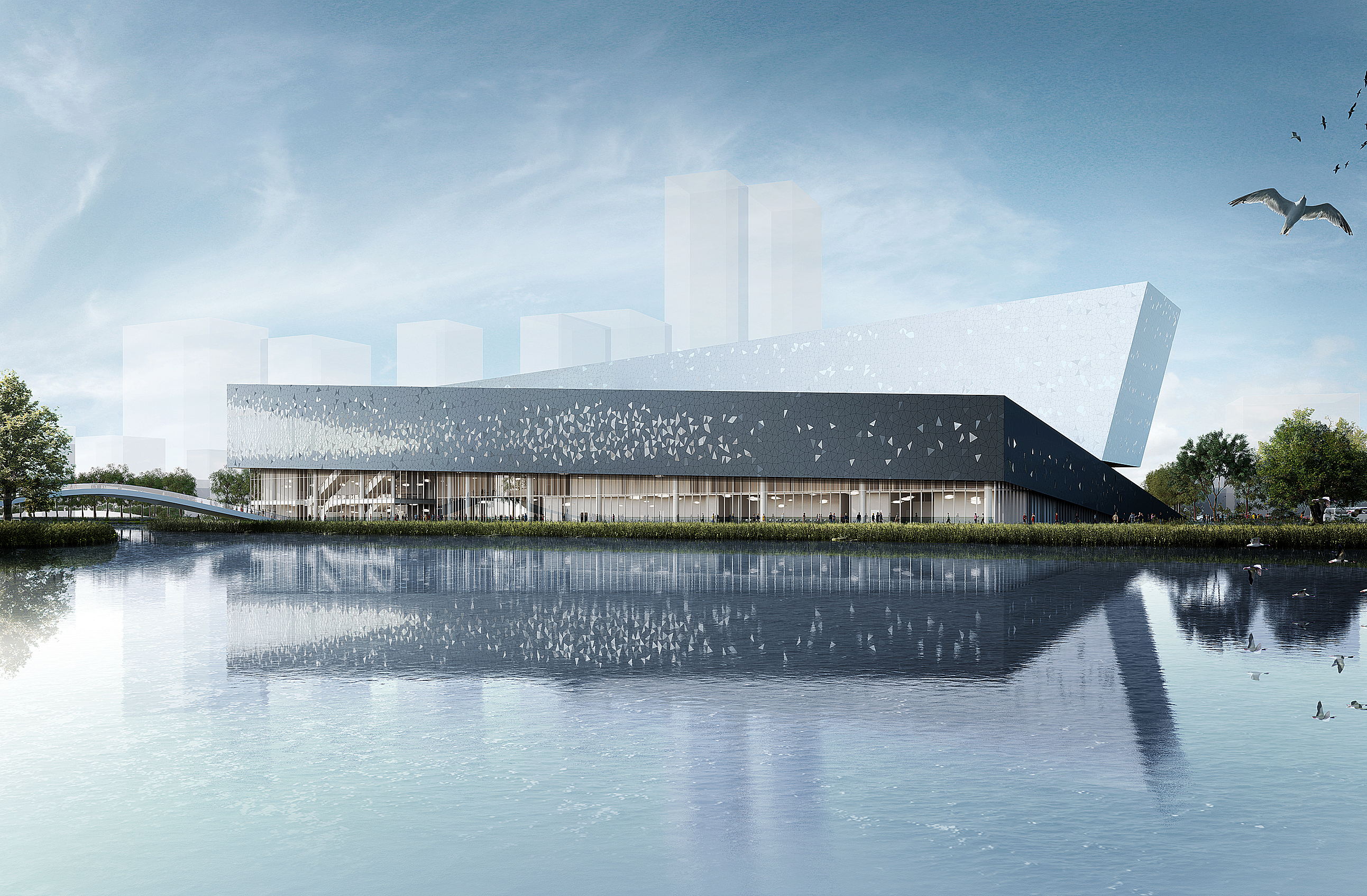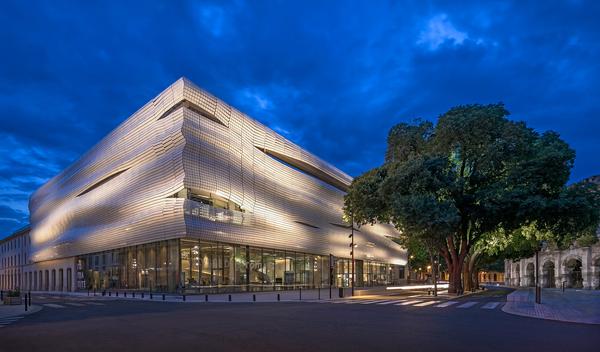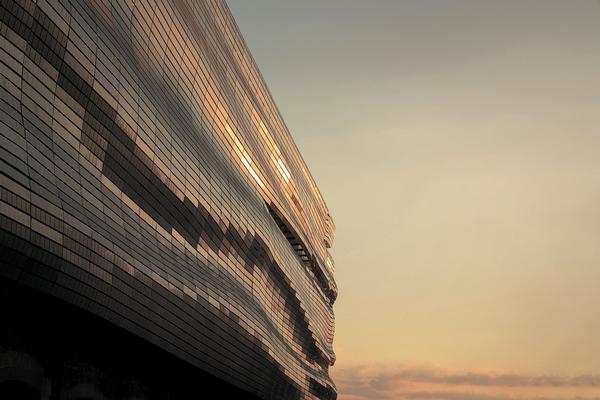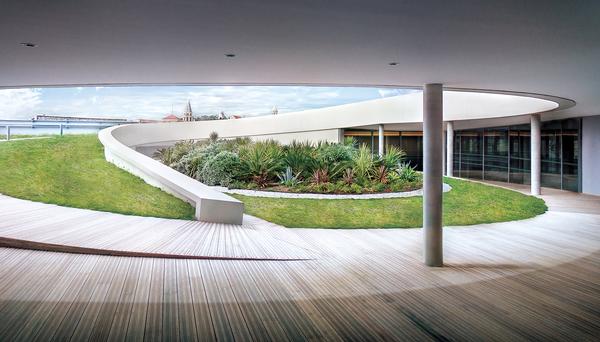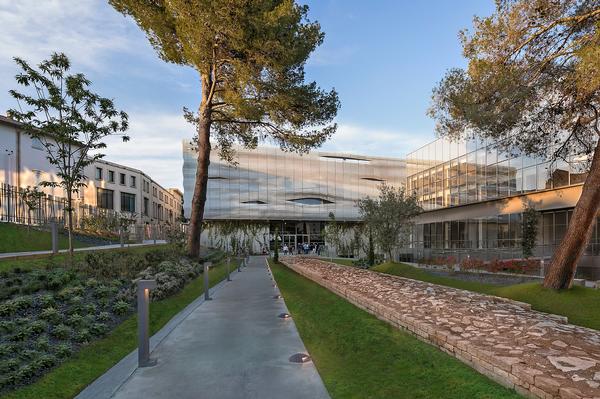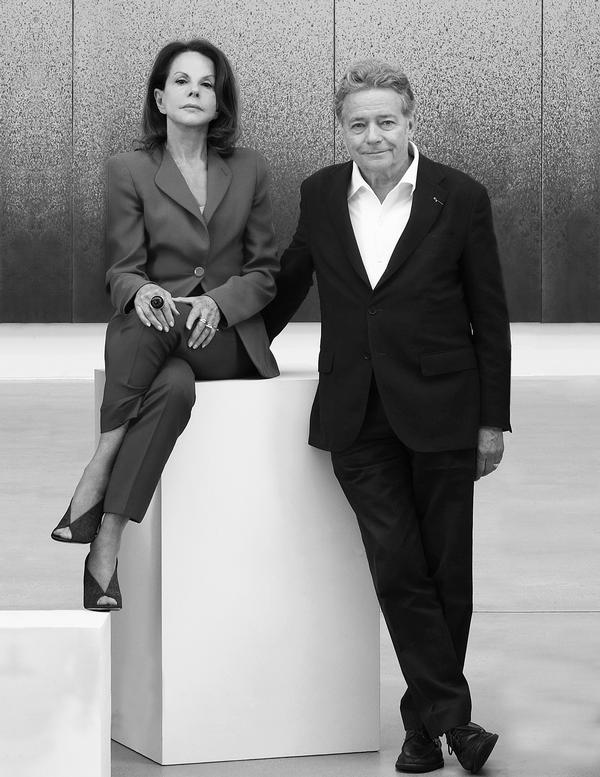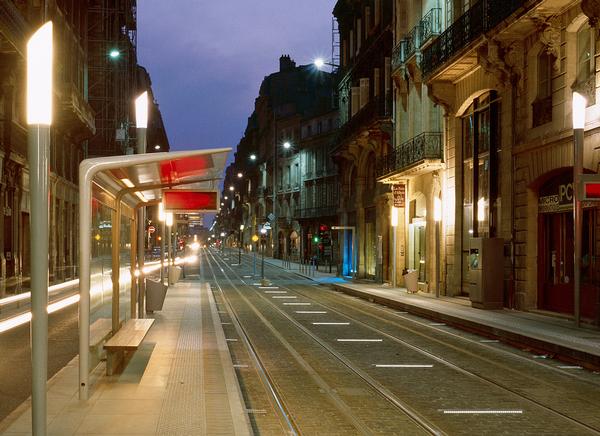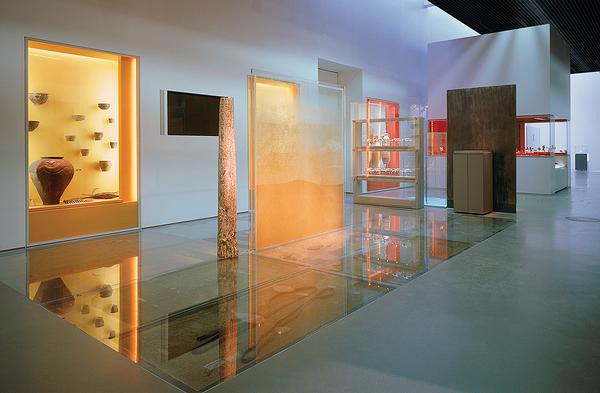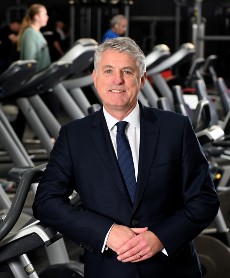features
Interview: Elizabeth de Portzamparc
The French-Brazilian architect and urbanist speaks to CLAD about her vision for the cities of tomorrow, her mission to bring culture to the masses and why design should counter loneliness
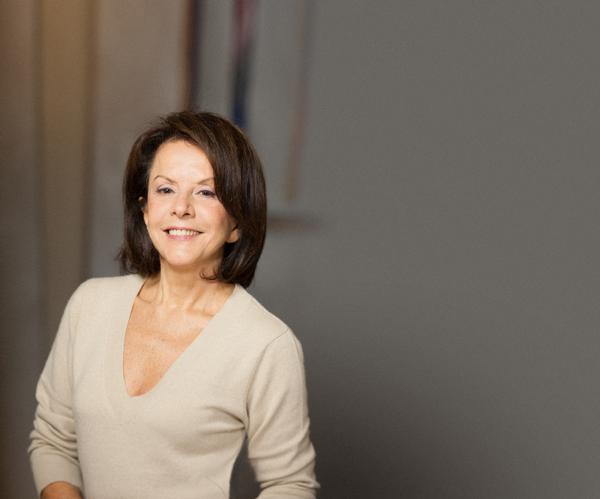
In the historic French city of Nîmes, a crumbling 2,000-year-old amphitheatre has a glamorous new neighbour: a futuristic, shape-shifting museum that appears to levitate just above the ground. Over 6,700 angled, silk-screened glass tiles bend and weave to create a monument that you suspect would both mystify and move the Romans who once cheered on Gladiators next door.
“The Musée de la Romanité is the most symbolic public facility I’ve ever worked on,” says its creator, the French-Brazilian architect Elizabeth de Portzamparc. “It is a citizen of the city it lives in, and a perfect symbol of my style of urban architecture.”
Urban architecture
Over the past 30 years, de Portzamparc has worked as an architect, furniture designer, museographer, academic and urbanist. In each of her guises, the modus operandi is the same: “To convey our collective values and provoke a dialogue between us and our surroundings.” Social issues matter as much as aesthetic ones, and her studio includes sociologists, environmental researchers and political scientists as well as designers and architects.
“While it is important to create good designs that stimulate serenity, I’m more interested in spaces that improve social relations,” de Portzamparc says. “I think that one of the largest problems that humanity faces is loneliness caused by individualism. I try to counter this by creating spaces where it is easy and comfortable for people to gather.”
As a researcher and government consultant, she has led the thinking behind the development of new towns and urban areas throughout France. This has included serving the Atelier International du Grand Paris – a specialist group tasked by former president Nicolas Sarkozy to plan the urban future of the French capital – through which she has advocated for more mixed-use projects, for the introduction of prefabricated sustainable and flexible housing, and for a new approach in how suburbs are laid out.
De Portzamparc’s early interest in urbanism came not from her experiences of a building or a city, but from a conversation she overheard aged 14 between Brazilian architect Sérgio Bernardes and a friend.
“He was explaining his ideas about a favela in a part of Rio,” she remembers. “The municipal government was thinking to tear it down in order to build a new town around the river for the people who were living in the slums. Bernardes thought it was a crime because those people would be moved very far from town where they had been living, where they had work and friends and where their children went to school. He thought they were being treated like criminals. I thought it was a very interesting debate, and I learnt the importance for an architect to have a social vision.
“Later I discovered Lina Bo Bardi’s Centro de Lazer Fábrica da Pompéia in São Paulo. She transformed an abandoned industrial site into a cultural, social and sporting complex that was very open and inventive.
“It was a real revelation to me that a collection of small towers and old buildings could be opened up to become something much more alive and interesting,” she adds. “That was the first time that I thought I should become an architect myself.”
In the 80s, de Portzamparc ran the influential Mostra gallery in Paris, a regular haunt for artists, designers and architects such as Jean Nouvel and Rem Koolhaas. During this period she began designing furniture and interiors, and finally buildings too. Completed projects include a flagship Pathé cinema in Amsterdam, a series of stations and urban furniture for the Bordeaux metropolitan tramway network and, of course, the museum in Nîmes, while she is currently working on a huge new Grand Paris railway terminal and a grand library for the Parisian suburb of Aubervilliers.
Welcoming the public
De Portzamparc feels that cultural typologies are particularly impactful in creating a common purpose and understanding in an increasingly fractured world. She describes museums and libraries in particular as “guardians of culture” and the mission to preserve heritage as “an immutable foundation” of her work.
“I want to evolve the function of cultural facilities to create social links. These buildings shouldn’t be closed off and restricted to knowledge keepers jealously guarding their contents – which is the desire of many of these institutions. Instead, they should welcome the public and quench people’s thirst for knowledge.
“Collections must be desacralized and opened up to trigger a greater diversity of interactions between us,” de Portzamparc adds. “We need really open cultural buildings – accessible and technologically equipped – so that as many people as possible can be educated and motivated to challenge the prevailing presentism we are experiencing as a civilization. We need to stop the destruction of our world through predatory practices. We need to think of the future.”
The Musée de la Romanité
For the museum in Nîmes – her highest-profile building to date – de Portzamparc decided that the building, completed last year, should reflect the identity of the city and its Roman heritage. She also wanted to create a proof-of-concept for what, in her eyes, a public facility must be like these days: Namely, “solid, sustainable and designed to survive for millennia, as the Roman arenas will do.” Other musts? A timeless aesthetic, programmatic flexibility and the ability to adapt to the changing climate.
During the competition process for the project, she made many trips to Nîmes “to become imbued with the places, the culture and the identity of the city” and to discover how she could “glorify the 21 centuries of architectural history” that separate the amphitheatre and the new museum.
Explaining her design concept, de Portzamparc says: “It seemed obvious that I had to create a dialogue between the buildings based on opposition and complementarity, rather than pastiche.
“There had to be a pleasant cohabitation between the ancient and the contemporary. I wanted to be worthy of such a challenge and to think very carefully about what this project can say about the goals of the future building. The solution was to use recent technology to design a very light piece of architecture.”
Above the transparent ground floor, the glass strips that form the building’s distinctive exterior – designed to resemble a pleated toga – stretch across a surface of 2,500sq m (27,000sq ft). Each holds seven screen-printed square tiles, created to evoke the Roman mosaics exhibited inside the museum and to create a sense of movement through the changing reflections of light during the day.
Inside, flat surfaces provide contrast to the outside curves. Slender columns are distributed to maximise exhibition and leisure spaces and to form a monolithic ensemble without expansion joints. Outside there are 3,400sq m (36,600sq ft) of archaeological gardens and a roof terrace offering visitors a panoramic view over the city, with the neighbouring arena in the foreground.
“It was important for the museum to have a close relationship with the city,” says de Portzamparc. “For that reason, there’s an interior street that crosses the building and climbs upwards to the roof terrace, in a constant search for openness. People who can’t or who don’t want to pay the ticket for the museum can still benefit from these select interior spaces and the gardens. This way, they get to familiarise themselves little by little with the museum, hopefully inspiring them to visit it later.”
She praises city officials for their support for the project: “A real manifesto for contemporary creation in a country which is often living in the past and suspicious when it comes to dealing with the new.”
2Portzamparc
De Portzamparc is married to architect Christian de Portzamparc, the first French winner of the Pritzker Prize. Since meeting in 1981, they have continued to work on their own projects with their respective studios. However, a few years ago they decided to experiment with a new model: 2Portzamparc.
“It was a very simple idea, because we were both outgrowing our premises – me in the north of Paris and Christian in the south,” she explains. “We decided to share the general management of our studios and to travel to the same part of the city every day! We finally found a building in the 9th district that was convenient for us both. Christian’s studio has some floors, there are some floors for me, and we have a joint management department sandwiched between us. It was a very practical idea, inspired by rentability as much as anything.”
Despite their shared umbrella company, Elizabeth and Christian Portzamparc mostly continue to work on their own projects, each using their own specific approaches and distinct teams.
“It’s impossible for us to do architecture together because we’re very different,” she explains, “although in the past we have worked together on the French embassy in Berlin and a museum of Breton civilization, with me doing the interiors.
“These days, we only tend to work together on large urban projects, where it is important to have different visions and voices,” she continues.
The Future
Next up for de Portzamparc is preparing for the International Union of Architects’ 27th World Congress in Rio in July 2020, for which she is a member of the honorary committee. Urbanists, engineers, architects and policymakers from across the world will gather to “debate the construction of the space of social life ... and formulate proposals for the future of cities.”
“It will be a very important debate,” she says, “between traditional points of view and new ways to approach city planning. I think there is a growing belief that new visions are needed to create positive social and environmental change, particularly in large metropolises and in the Third World.”
She is also working on a book focusing on 18 of her projects since the 1990s and exploring the through lines that connect them. Despite this period of reflection, de Portzamparc is more excited to look to the future.
“Every new thing represents an important moment of my evolution as an architect, building on what’s come before,” she says. “I’m currently working on a city planning project with some social and cultural institutions and sports clubs. I want to do a very holistic project. It will be about space, and creating interaction and activity to enrich the lives of the people there.
“That is the direction of my work now – following the same themes that have driven me for my whole career, but in new ways and on a larger scale. My aim is always to create something new and impactful.”
This major station will be a new entry point to the French capital, extending the city’s transport network to the developing northeastern suburbs and international Le Bourget airport. The building is designed to be intuitive, efficient and to optimise access to five different means of transport. A large forecourt with a gentle slope will become a new urban forum, while dynamic pitched roofs will emphasise the idea of mobility and aviation. “It is a project that fully embodies the symbolic identity of the city without neglecting the human scale,” says de Portzamparc.
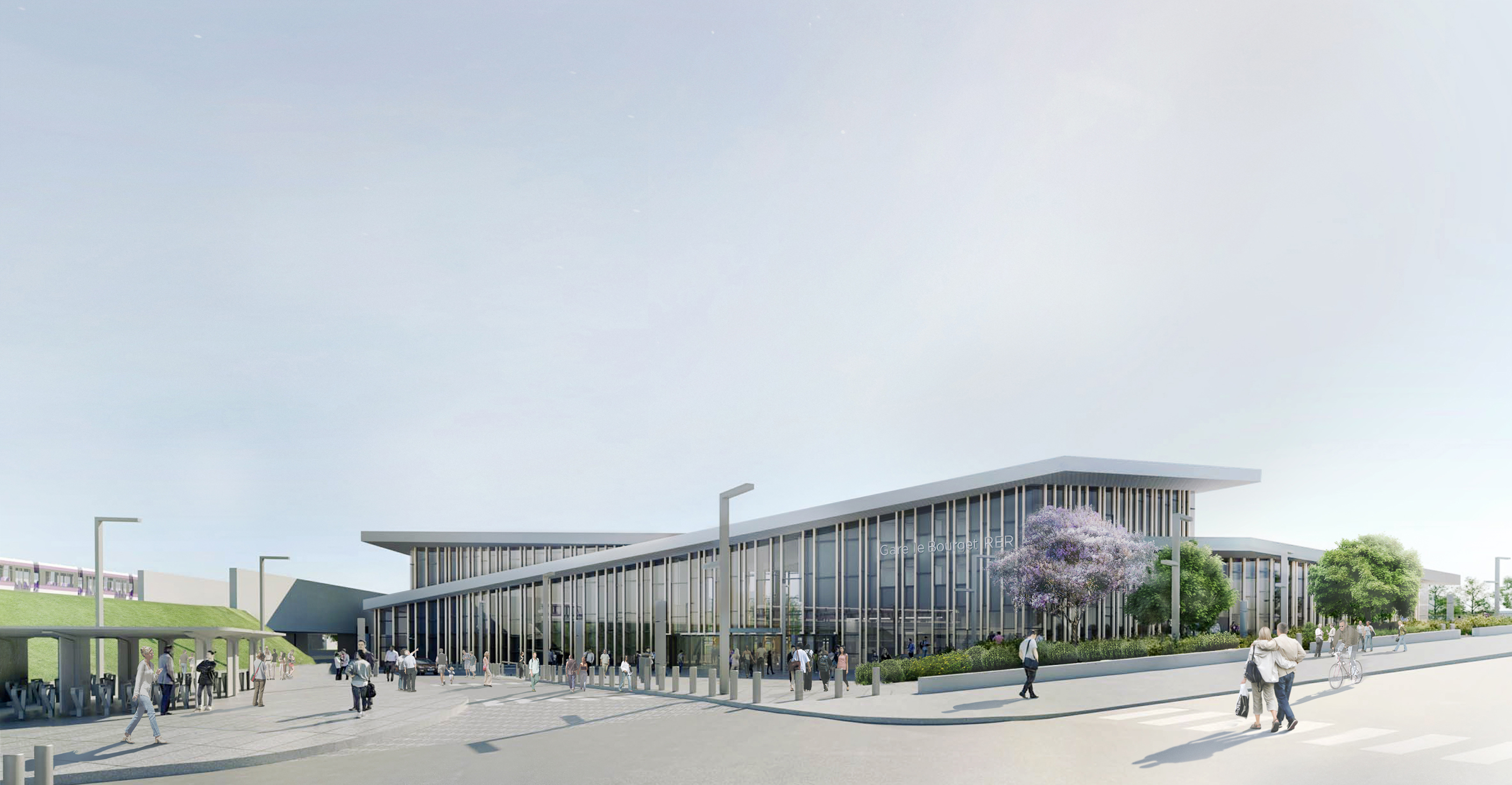
De Portzamparc has conceived a mixed-use redevelopment for Paris’s abandoned Leon Blum handicraft and commercial centre. Her design envisions 13,000sq m of coworking spaces, shops, restaurants and an urban garden near the banks of the Seine. Describing the concept, the architect says: “The street, far from stopping at the threshold of the doors on the ground floor, envelops the whole building. The public space rises through every floor, forming truly interior streets which connect the different functions of the buildings.”
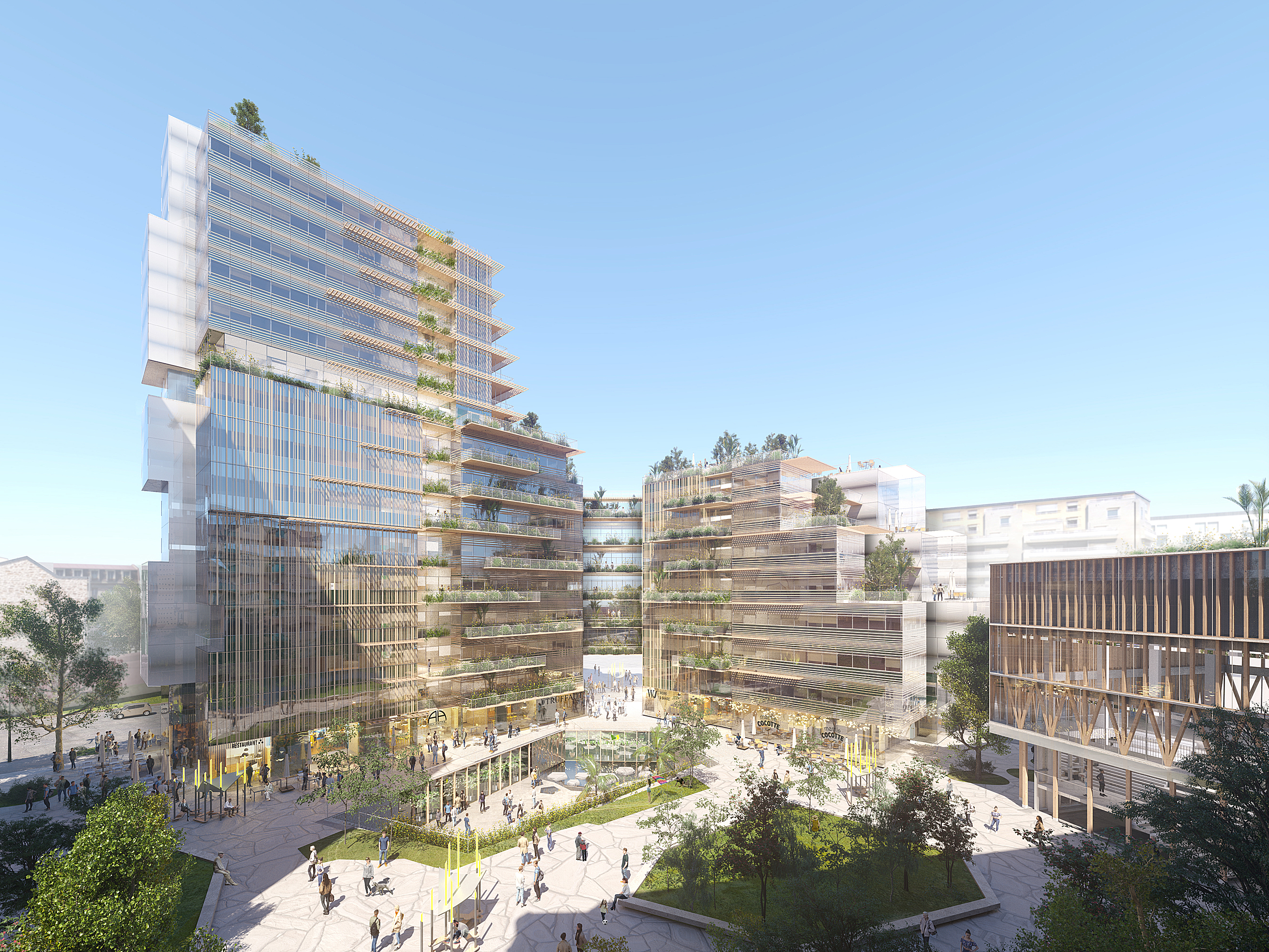
Described as “an example of how neighbourhoods could be in the future,” this 262m- (860ft)-high tower – designed with local architects Ricky Liu & Associates – will house a digital cultural centre, galleries, an auditorium, a black box theatre, retail, offices and a restaurant.
Set to open in 2021, the building has been designed as a sustainable neighbourhood “and vehicle for human interactions”. The base of the tower and its lower floors will be considered public spaces, connected with the surrounding neighbourhood and an adjacent park that will extend into the core of the project.
Ribbon-shaped walkways will link the first levels and wrap the building in an upward movement, “breaking the traditional barrier between inside and outside and between private and collective spaces.”
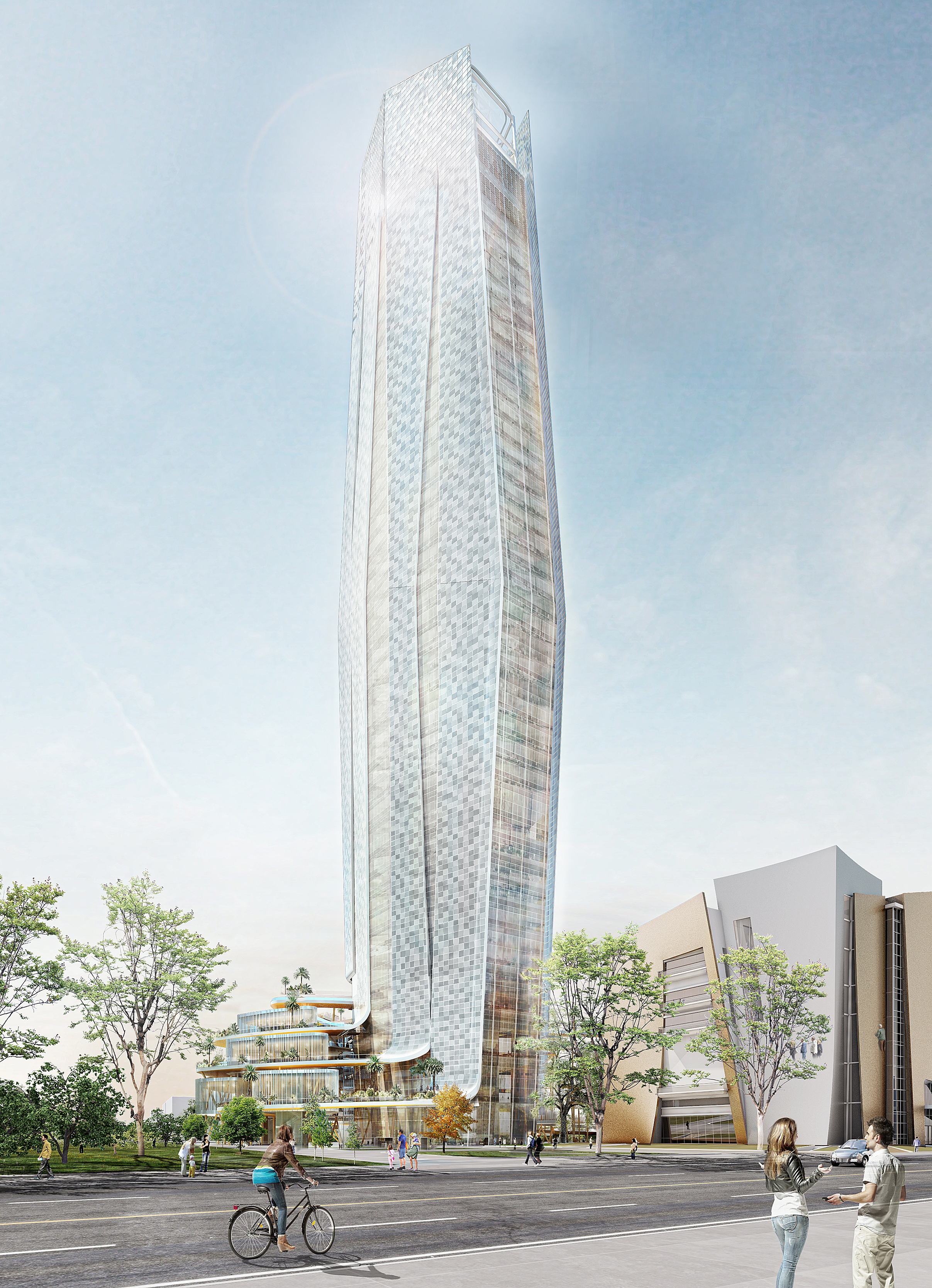
De Portzamparc is developing her competition-winning concept to create a major library for Paris’s new City of Humanities and Social Sciences in the commune of Aubervilliers. With a floor area of 23,000sq m, the glass zero energy building – formed of two asymmetrical volumes – will bring together the collections of 45 separate libraries into one vast archive for the campus and the city.
“The project is focused on saving resources, while providing aesthetic, qualitative and functional spaces to maintain a peaceful environment for study and research,” says de Portzamparc. “It has been designed as a symbol of innovation and sustainable architecture, and a search for economy of forms and raw materials.”
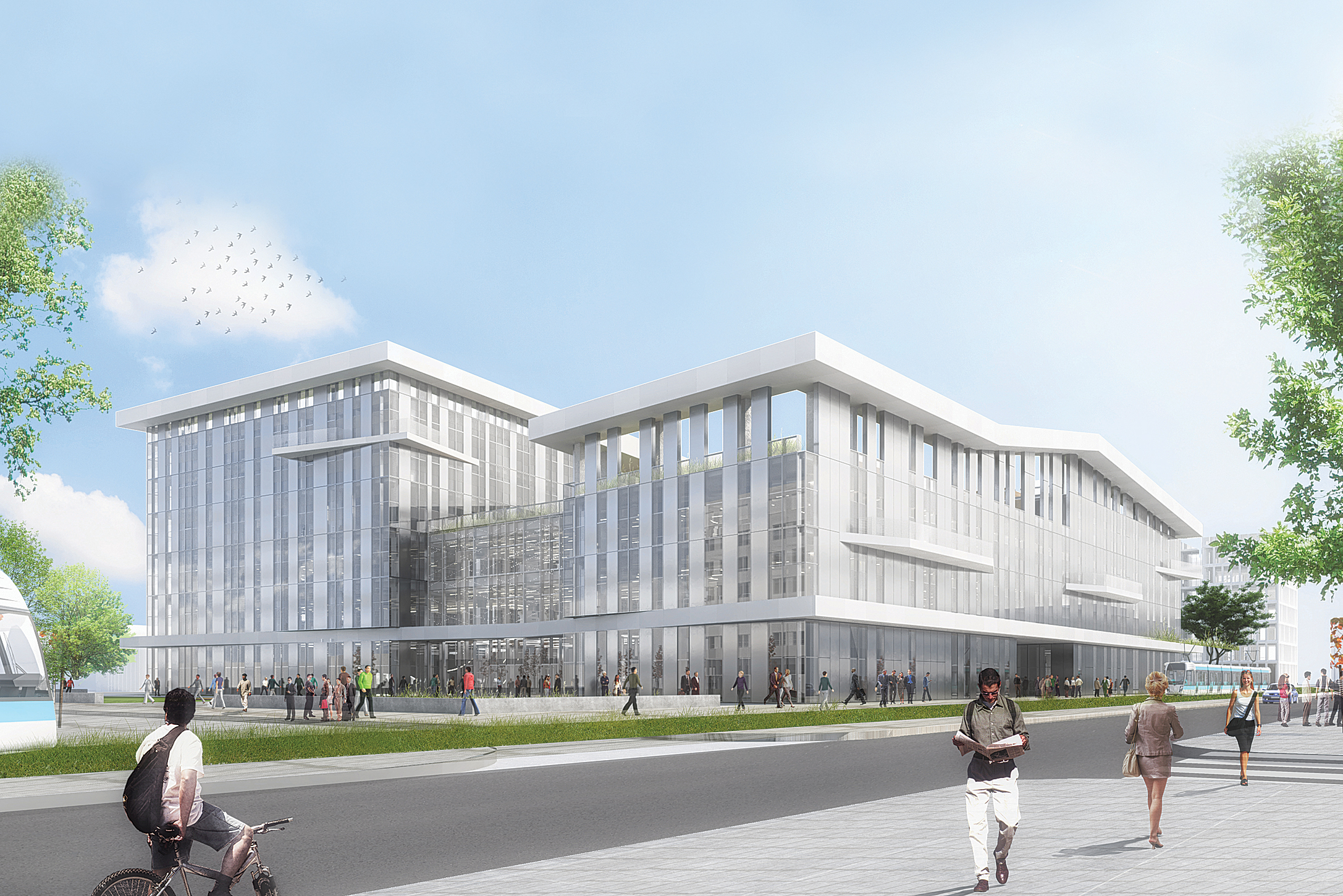
While little can be revealed about this project, located in Shanghai’s Pudong district, early visuals suggest this lakeside hub will have a sleek and futuristic form. According to de Porzamparc, she has embraced “an architectural style that is always in motion, and looking to the future.”
